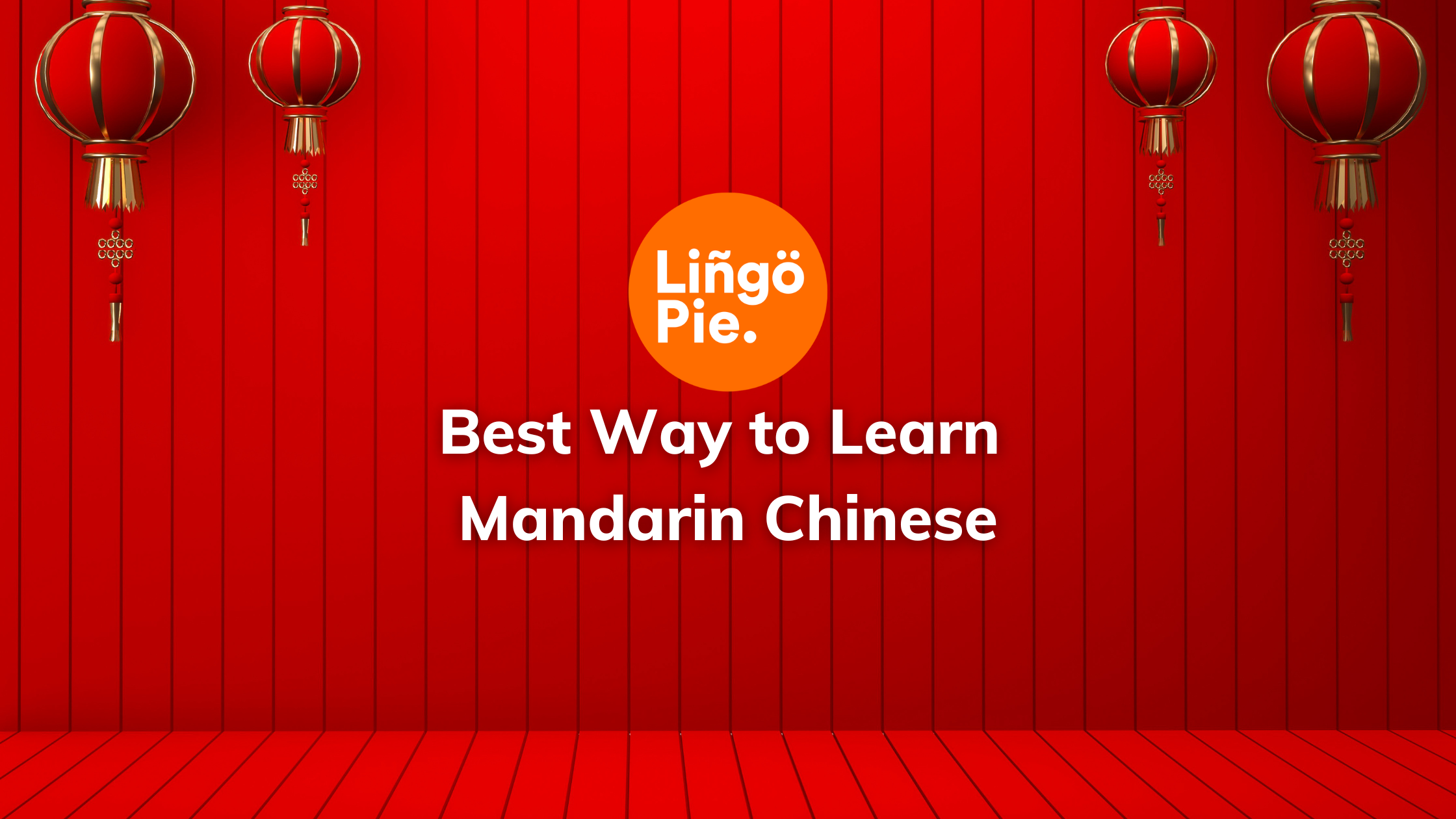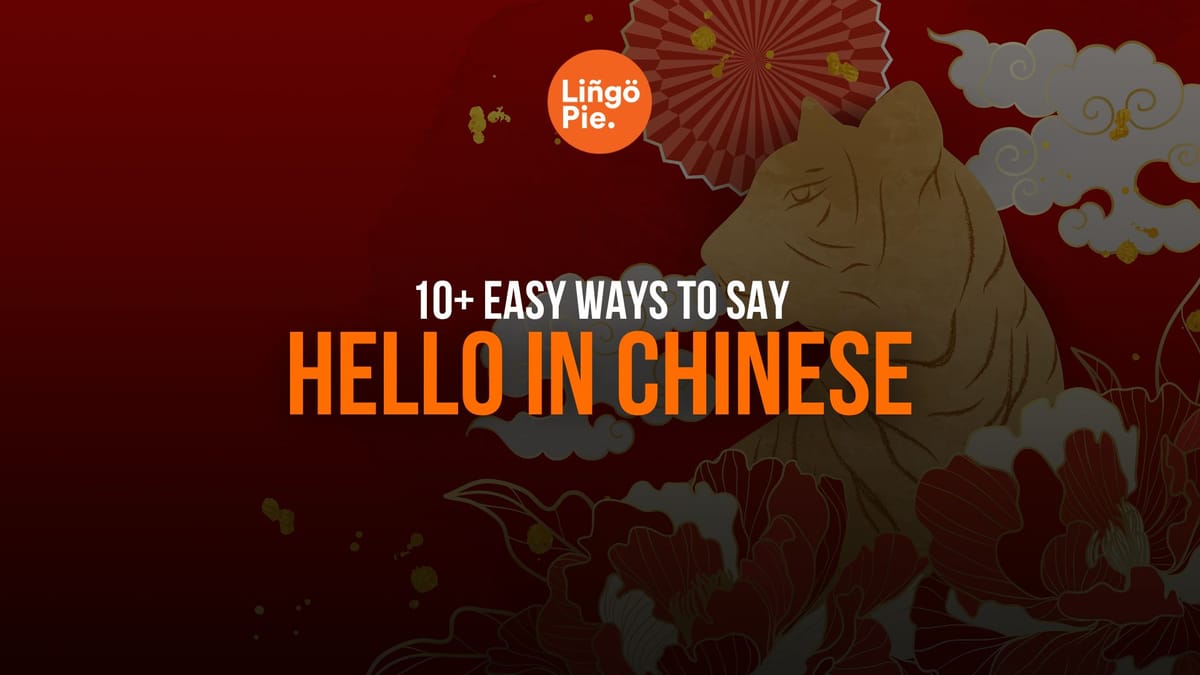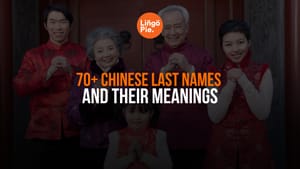So, Chinese Language Day is coming up on April 20th, and it got me thinking. What’s the first thing most of us want to learn in Chinese? How to say hello, of course! The good news is that you can take advantage of this celebration to learn some of the many ways Chinese people greet each other. You know, not just the textbook 你好 (nǐ hǎo) that Google Translate gives you!
In this post, I’ve put together a massive list of 10+ ways to say hello in Chinese that’ll make you sound like you actually know what you’re doing and saying. I’ll go through all the translations, including the Mandarin characters, the Pinyin equivalent, and the cultural notes to surely help you out.
- 18 Chinese Love Phrases For Your Next Date
- 12 Zodiac Signs In Chinese: How To Talk About Your Sign
- 60 Chinese Slang Words And Phrases Everyone Should Know

How To Say Hello In Chinese
你好 (nǐ hǎo) - Hello
This is the standard "hello" that everyone learns first. Composed of the Mandarin characters for "you" (你 nǐ) and "good" (好 hǎo), it literally translates to "you good." Native speakers mainly use it for first meetings or formal situations. It's perfectly correct, just a bit "textbook," like saying "hello" instead of "hey" to your friends in English.
您好 (nín hǎo) - Hello
This is the polite, respectful version of hello used for elders, teachers, bosses, or customers. The only difference is replacing 你 with 您, but this small change shows significant respect in Chinese culture.

大家好 (Dàjiā hǎo) - Hello everyone
This is how you greet a group of people in Chinese. Literally meaning "big family good," it's the perfect way to start when addressing a classroom, meeting, or any gathering. It's widely used in both casual and formal settings, similar to saying "Hello everyone" or "Good morning folks" in English.
哈罗 (hā luō) - Hello
If you say this out loud, you'll immediately notice it sounds just like the English "hello." That's because it is! This is a loanword borrowed from English that’s super popular with younger Chinese people. Using this casual greeting instead of the formal 你好 makes you sound more natural and in the know, especially when talking with people under 30.
嗨 (hāi ) – Hi
This is another English loanword that sounds exactly like "hi" and serves the same purpose. Young people in cities especially love using this casual greeting with friends and classmates. It's short, simple, and perfect for informal situations like meeting up for coffee or chatting online.

喂 (Wéi) - Hello (for phone)
This is the standard way Chinese people answer the phone. Just note that this is ONLY used for phone conversations, never in face-to-face meetings. Interestingly, 喂 wasn't originally a greeting at all but a way to check if the other person could hear you when phone connections were poor.
嘿 (Hēi) - Hey
Similar to 嗨 (hāi), this is another casual greeting borrowed from English that sounds like "hey." Young Chinese people use it to greet friends and peers in informal settings. It's particularly popular in text messages and on social media.
The difference between 嘿 and 嗨 is subtle. 嘿 often carries a slightly more playful or attention-grabbing tone, like you’re about to tell someone something interesting.
你吃了吗 (Nĭ chī le ma?) - Have you eaten?
Literally meaning "have you eaten?", it's a way of showing care and concern for someone's wellbeing. The greeting originated during times when food scarcity was common in China, and asking if someone had eaten was a genuine concern. Today, it's less common among younger generations in big cities, but still widely used by older people and in rural areas.
When someone asks you this, they don't actually expect a dinner invitation - just respond with "吃了" (chī le) or "Yes, I have” and continue the conversation.

最近怎么样? (zuìjìn zěnmeyàng?) - How have you been?
This is what locals actually use instead of textbook greetings. It means "recently how?" and works perfectly when meeting friends you haven't seen for a while.
When someone asks you this, respond with "还不错" (hái bú cuò) - "not bad" or "挺好的" (tǐng hǎo de) - "pretty good," then ask them back with "你呢?" (nǐ ne?) - "and you?"
你好吗? (nǐ hǎo ma) - How are you?
Despite being in every textbook, native speakers rarely use this phrase. It sounds like something only foreigners say and can feel awkwardly formal. If someone does ask you this, simply reply with "我很好" (wǒ hěn hǎo) - "I'm very well" or "我还好" (wǒ hái hǎo) or "I'm fine."
- How To Say Hello In Dutch In 10+ Easy Ways
- How To Say Hello In Russian: 7 Common Phrases
- Saying Hello in Japanese: Pronouncing Japanese Greetings
Chinese Greetings For Different Times Of The Day
Want to greet based on the day instead? Time-specific greetings in Chinese do double duty as they work as hellos and also tell someone you’re aware of the time of day. Here's how to greet like a local at any hour.
早上好 (zǎoshang hǎo) - Good Morning
The standard morning greeting used from sunrise until about 10 am. Literally, "morning good" is appropriate for everyone from family to colleagues to strangers on the street. In business settings, this greeting shows punctuality and respect for the workday, so it's recommended that you use it when entering the office or meeting someone for breakfast.
早 (Zǎo) - Good Morning
The short, casual version of 早上好 that locals actually use most often. Similar to saying just "morning" in English, it's quick and friendly. Ideal for greeting roommates, coworkers you see daily, or neighbors you pass on your morning run.
早安 (zǎo ān) - Good Morning
A slightly more elegant morning greeting popular in Taiwan and among younger mainland Chinese. "安" means peace or security, giving this greeting a warmer, more caring tone. It's common in texts, social media, and romantic relationships.
下午好 (xiàwǔ hǎo) - Good Afternoon
Used from noon until about 6pm, this greeting acknowledges the day is well underway. In offices, it's common when returning from lunch or starting afternoon meetings.
晚上好 (wǎnshàng hǎo) - Good Evening
The appropriate greeting from 6pm until bedtime. Use this when arriving at dinner, evening classes, or any nighttime social gathering. It signals the transition from workday to evening activities and is almost universally used in restaurants, shops, and homes during evening hours. Even taxi drivers and delivery people expect this greeting after dark.

Regional Greeting Differences
In mainland China, standard Mandarin greetings like 你好 (nǐ hǎo) are common, but Taiwan often favors more elegant expressions. While mainland Chinese use 早上好 (zǎoshang hǎo) for "good morning," Taiwanese prefer 早安 (zǎo ān), which has a softer, more refined feel. Similarly, they use 午安 (wǔ ān) instead of 中午好 (zhōngwǔ hǎo) for "good afternoon."
Hong Kong predominantly uses Cantonese, where you'll hear 你好 (néih hóu) instead of Mandarin’s nǐ hǎo. In Singapore, where English is widely spoken alongside Mandarin, you’ll notice more code-switching, with many locals mixing Chinese greetings with English in the same conversation.
The table below highlights key regional greeting differences to help you navigate conversations across different Chinese-speaking communities:
| Greeting | Mainland China | Taiwan | Hong Kong | Singapore |
|---|---|---|---|---|
| Hello | 你好 (nǐ hǎo) | 你好 (less common) | 你好 (néih hóu) - Cantonese | 你好 (nǐ hǎo) |
| Good morning | 早上好 (zǎoshang hǎo) | 早安 (zǎo ān) | 早晨 (jóu sàhn) - Cantonese | 早安/早上好 (both used) |
| Good afternoon | 下午好 (xiàwǔ hǎo) | 午安 (wǔ ān) | 午安 (ng ōn) - Cantonese | 下午好 (xiàwǔ hǎo) |
| Casual hi | 嗨 (hāi) | Hello (English) | 喂 (wai) - Cantonese | Hi/Hello (often English) |
| Phone greeting | 喂 (wéi) | 喂 (wéi) | 喂 (wai) - Cantonese | 喂 (wéi) |
| How are you | 最近怎么样 (zuìjìn zěnmeyàng) | 最近好吗 (zuìjìn hǎo ma) | 点呀 (dím a) - Cantonese | How are you (often English) |
What To Say After A Chinese Greeting
Not sure how to respond when someone greets you in Chinese? Here's your cheat sheet for the most common greetings:
| Greeting | Response | English Meaning |
|---|---|---|
| 你好 (nǐ hǎo) | 你好 (nǐ hǎo) | Simply say "hello" back |
| 您好 (nín hǎo) | 您好 (nín hǎo) | Return the formal greeting exactly |
| 你好吗? (nǐ hǎo ma?) | 我很好,你呢? (wǒ hěn hǎo, nǐ ne?) | "I'm good, and you?" |
| 你吃了吗? (nǐ chī le ma?) | 吃了,你呢? (chī le, nǐ ne?) | "Yes I've eaten, and you?" |
| 最近怎么样? (zuìjìn zěnmeyàng?) | 还不错,你呢? (hái bú cuò, nǐ ne?) | "Not bad, and you?" |
| 早上好 (zǎoshang hǎo) | 早上好 or just 早 (zǎo) | "Good morning" or just "Morning" |
| 大家好 (dàjiā hǎo) | 大家好 (dàjiā hǎo) | "Hello everyone" back |
Want to sound like a native speaker? Adding 你呢? (nǐ ne?) - "And you?" after your response keeps the conversation flowing naturally.

Getting Your Chinese Greetings Right
Even with perfect Chinese pronunciation, your greeting can still miss the mark if your body language sends the wrong message. Let's fix the most common mistakes that trip up foreigners when saying hello in Chinese.
- Using 你好 with everyone - The biggest beginner mistake is using 你好 with elders or authority figures. Always use 您好 with teachers, bosses, or anyone significantly older than you.
- Forgetting the hierarchy - In group settings, always greet the oldest or most senior person first. Starting with the wrong person can be considered disrespectful.
- Pronouncing tones incorrectly - Saying 你好 with flat tones sounds robotic. The first syllable (nǐ) has a dipping-then-rising tone, while the second (hǎo) has a falling-rising tone.
- Expecting "How are you?" responses - When a Chinese person asks 最近怎么样 (How have you been?), they genuinely want a brief update, unlike the automatic "fine thanks" in English.
- Defaulting to 你好吗 - This textbook phrase marks you as a foreigner. Locals rarely ask this and might find it awkwardly formal.
Oh, and another note! Unlike in Japan or Korea, bowing isn’t standard in Chinese culture. A light handshake is the norm for business settings, but it should be gentler than Western handshakes. A firm grip can come across as aggressive to Chinese people.
Ready To Say Hello In Chinese?
Now that you've mastered these Chinese greetings, take your language skills to the next level with Lingopie! If you're serious about learning Chinese in a way that's actually enjoyable, Lingopie offers something textbooks can't: authentic immersion through real Chinese TV shows and movies.
Lingopie's Chinese content library includes everything from modern dramas to classic films, giving you exposure to different accents, slang, and cultural contexts. The platform features dual subtitles that let you simultaneously see Chinese characters and English translations.
When you encounter a new word, just click on it for an instant translation and pronunciation guide. This interactive approach makes it easy to learn Chinese naturally, the way native speakers actually use it. So what are you waiting for? Try it FREE for 7 days to see where Lingopie can take you!






![What’s The Best Way To Learn Dutch On Your Own? [2025 Guide]](/blog/content/images/size/w1200/2025/04/Best-way-to-learn-Dutch.jpg)



![Best Way To Learn Chinese: Tips & Techniques For Learning Mandarin [2025]](/blog/content/images/size/w300/2023/10/Best-way-to-Learn-Mandarin-Chinese.png)